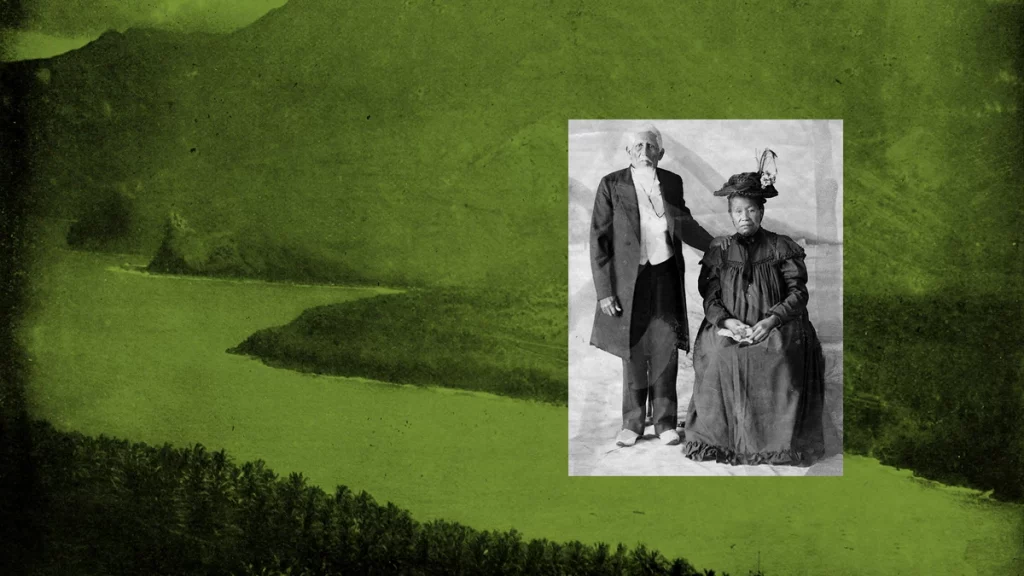In 1853, the Hawaiian Mission Society despatched missionaries to the Marquesas, an island chain some 2,400 miles away. American and English missionaries had already tried to succeed in the area made well-known within the West by the novels of creator Herman Melville within the 1840s, and finally it failed. Kind and Omg.
The ordination of the primary Native Hawaiian pastor, James Kekela, catalyzed the start of this mission.
“A number of Hawaiians had been licensed to evangelise, however Kekela was the primary to obtain ordination and have become the primary pastor of the church,” Rufus Anderson, international secretary of the American Board of Commissioners of International Missions (ABCFM), later wrote.
The sending of Native Hawaiian missionaries to distant Pacific islands on impartial missions was seen as a vital step in preparation for the top of ABCFM supervision and assist. In 1864, the Hawaiian Evangelical Affiliation changed ABCFM on the Sandwich Islands Mission.
In 1853, Matunui, excessive chief of the Marquesas island of Fatu-hiva, accompanied by his son-in-law Pu'u, a local Hawaiian, arrived in Lahaina, Maui, the place Pu'u was born and raised.
“It quickly turned obvious that Matunui had come to Hawaii for the particular objective of recruiting missionaries,” wrote Dwight Baldwin, a missionary doctor from Lahaina. “In reply to [a] When requested about his request for missionaries, Matunui replied: “… we’ve got nothing however battle, worry, hassle, poverty. We’ve got no good, we’re bored with dwelling like this, and we want to be such as you right here.'
The Hawaiian Missionary Society chosen 4 Hawaiian ministers and lecturers who had been accompanied by their wives. Amongst them was Kekela, the “humble, hardy man”, Maui nurse [pastor] Samuel Kauwealoha and deacons and lecturers Lot Kuaihelani and Isaia Kaiwi.
However the rosy imaginative and prescient for the Marquesan mission quickly pale and harsh actuality set in. Matunui's missionary enthusiasm cooled, the wars continued and the Marquesans struggled to supply materials assist for Kekela and the opposite missionaries. However, the Hawaiian mission endured, and Kekela settled on the island of Hiva Oa.
Over time, the Marquesans adopted extra western conduct and tradition. Missionary James Bicknell, who had joined the Hawaiians, famous the change positively in an 1862 Hawaiian Missionary Society report:
Typically, individuals have improved considerably, their manners are softening, they’re higher dressed, and a few are starting to really feel a way of disgrace. … People have made appreciable progress basically intelligence. … Their data of international international locations will increase and their thirst for extra. Folks additionally discovered to differentiate between missionaries and different foreigners. The distinction could be very marked and applies in components distant from direct missionary affect.
In 1864, Kekela and others rescued an American whaler named Jonathan Whalon who was buying and selling on Hiva Oa. The group went after Whalon, enraged on the Peruvian slaver who had kidnapped the boys of Hiva Oa. As they ready to prepare dinner and eat him, Kekela got here to the rescue and selflessly traded his prized six-oared whaling boat for the lifetime of a whaler.
For his courageous rescue, President Abraham Lincoln rewarded Kekela with a big gold watch and despatched presents to others who helped save the whaler. Kekel's watch bears this inscription: “From the Rev. J. Kekel, President of america, for his noble conduct in saving an American citizen from dying on the island of Hiva Oa, January 14, 1864.”
Seventeen years later, Secretary of State Anderson introduced that regardless of years of hardship, Kekela, Kauwealoha and Kaiwi had been nonetheless lingering within the Marquesan mission subject. In 1899, the Marquesas mission lastly disbanded when the aged, sick and almost blind Kekela returned residence to Hawaii for a well-deserved retirement.
Again within the Marquesas, the Hawaiian-Marquesian Kekela household continues to serve within the Protestant church buildings of the distant Polynesian island chain. Just like the Hawaiian Islands, the world is present process a cultural revival, changing into a society effectively related to the twenty first century world past their distant islands.
Christopher “Chris” Cook dinner is an creator from Kauaʻi, Hawaii, and a researcher of the monarchical and missionary eras of Hawaiian historical past. He’s a graduate of the College of Hawaiʻi and the creator of a biography of Opukahai-Henry Obookiah, the primary baptized Native Hawaiian Christian. He blogs at www.obookiah.com
